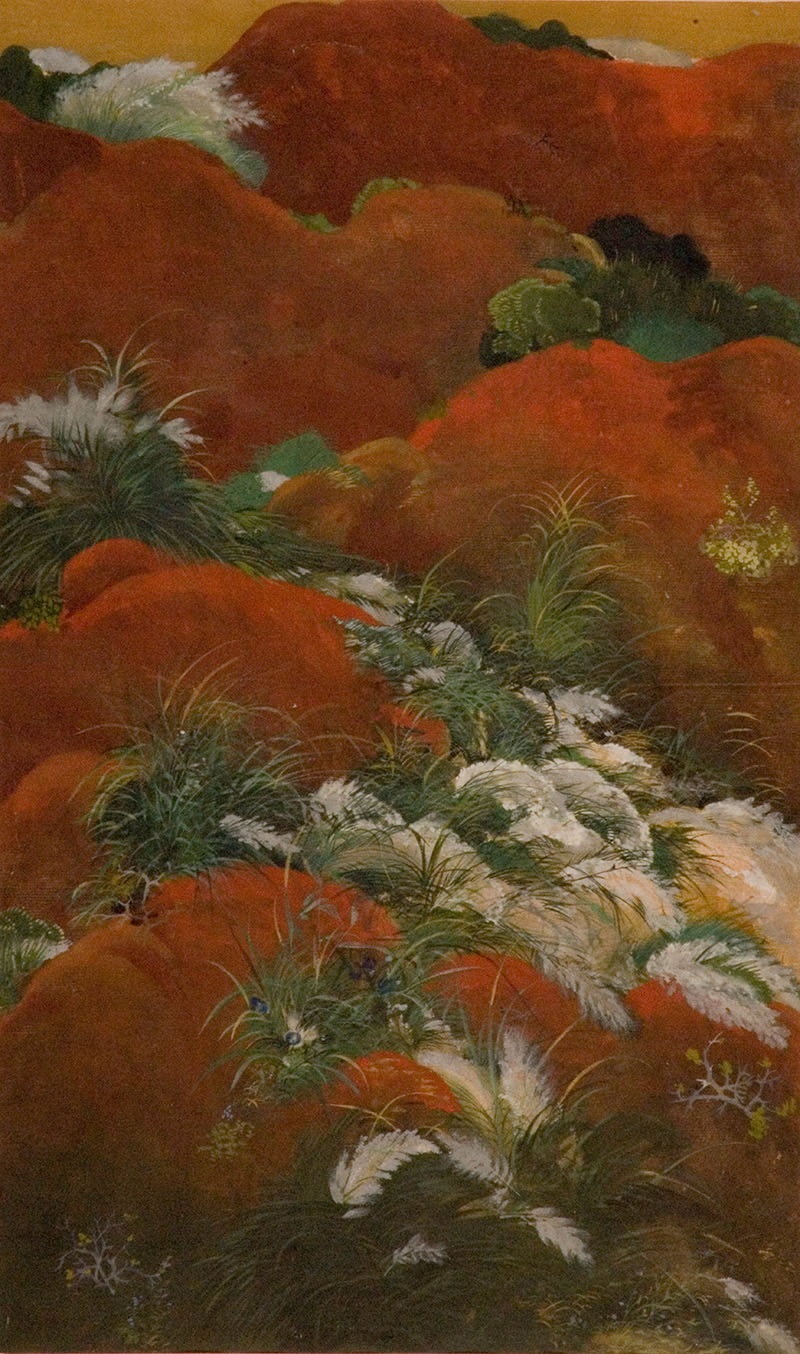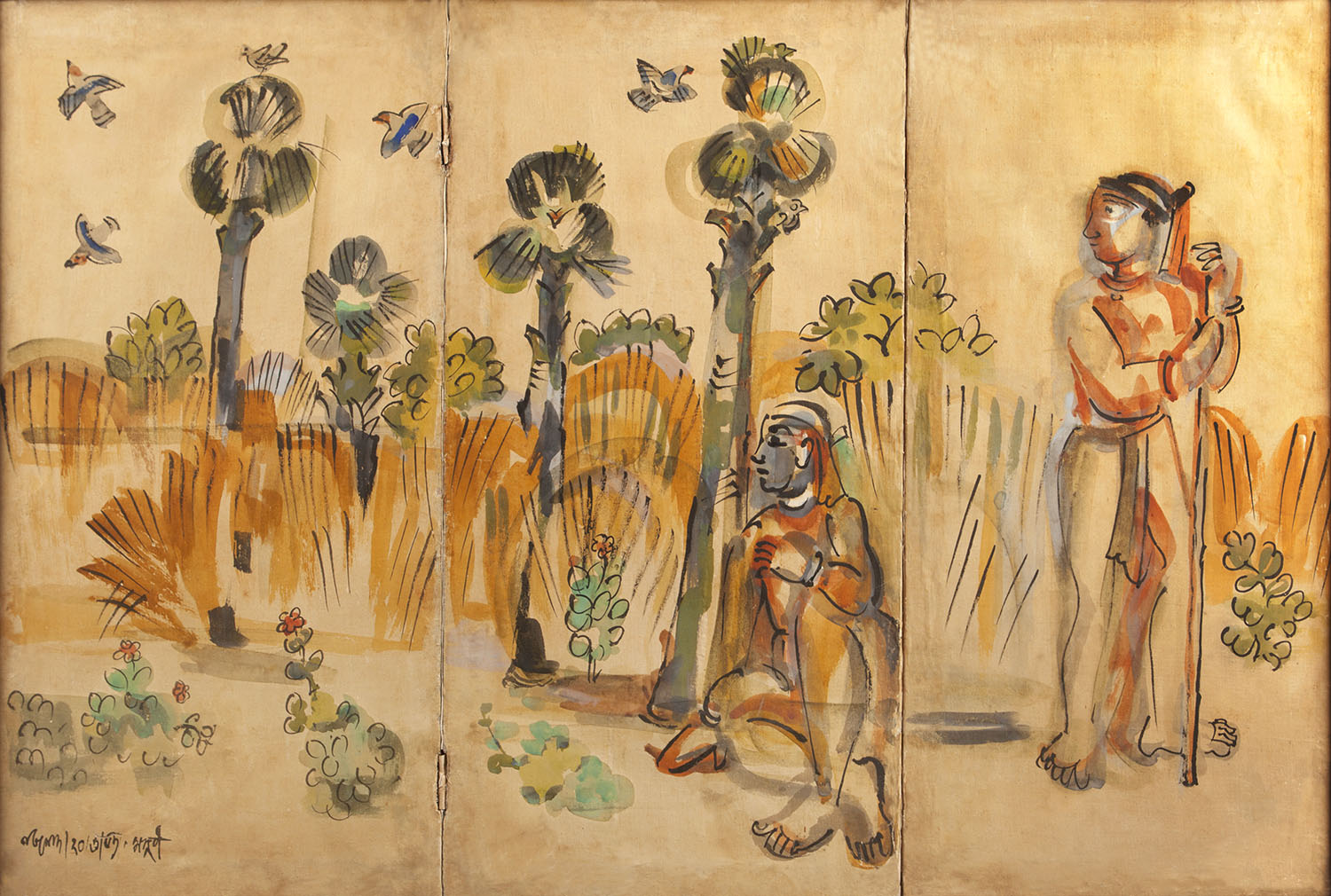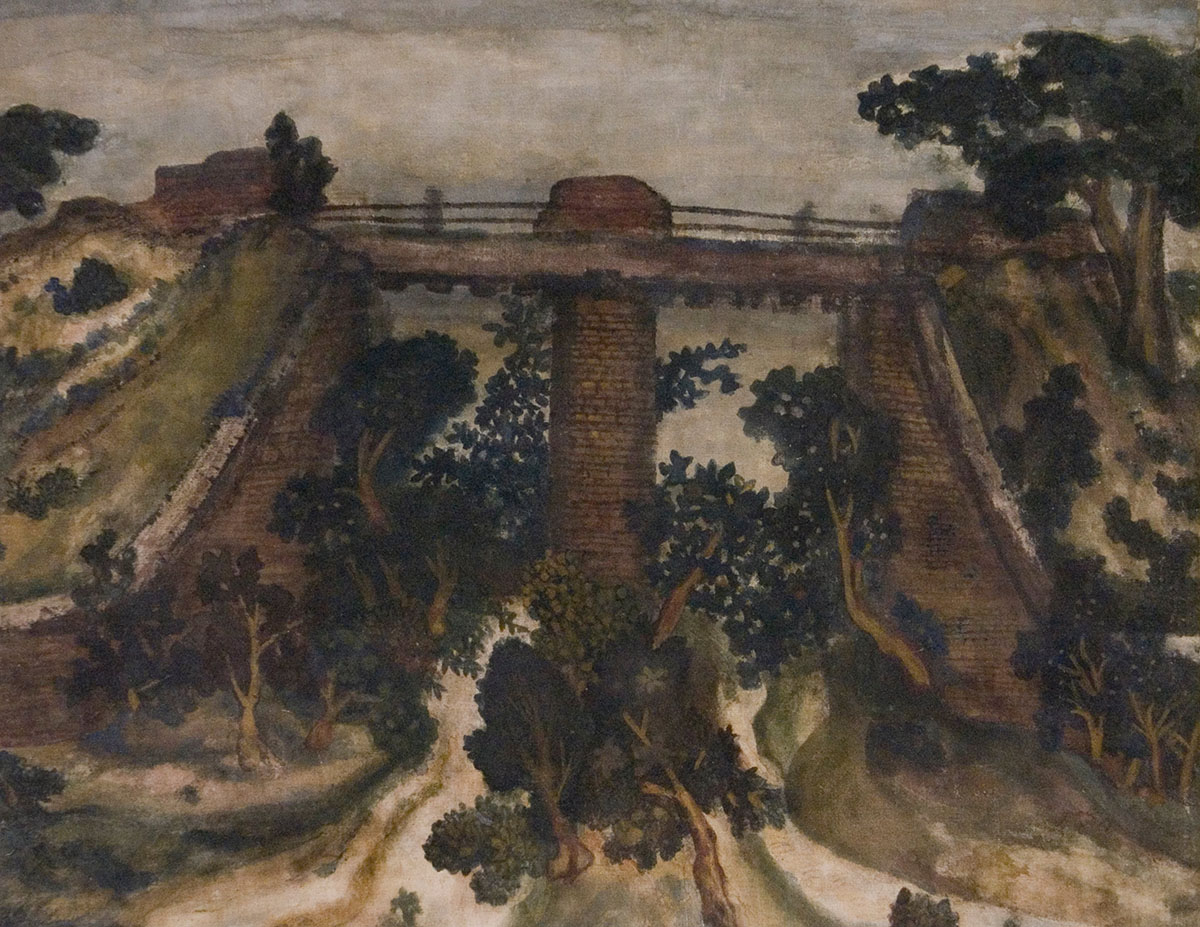ARTICLE
Benode Behari Mukherjee
Mukherjee’s largest mural, Life of Medieval Saints (1946–47), is located in the library of the Hindi Bhavana, Shantiniketan. Done in fresco, the mural portrays Bhakti saints and their contributions to Hindi literature, with the saints depicted in a large procession spanning three walls. The work reflects Mukherjee’s cross-disciplinary artistic tendencies and draws on the aesthetic forms and styles of Persian miniatures, Pallava reliefs, Chola bronzes, East Asian calligraphic scrolls, Giotto frescoes and Cubist elements.
In late-1948, Mukherjee began working as a curator for the National Museum of Nepal, Kathmandu, and made contact with a number of local artists, including the Nepali artisan Kulasundar Shilakarmi. He also explored his landscape painting practice in greater depth during this period. He returned to India in 1951 and taught at the Vanasthali Vidyapith, Rajasthan, where he also created two murals. In 1952, Mukherjee moved to Mussoorie and established the Benodebehari Mukherjee Training Centre for Art and Craft, which attempted to implement an educational program for teachers and students to study history alongside art and craft. However, the school was short-lived, and Mukherjee returned to Shantiniketan by 1958. By this time, following an unsuccessful cataract operation in 1957, Mukherjee had lost his eyesight.
At Shantiniketan, Mukherjee taught art history and continued creating works of his own, primarily drawings, lithographs, paper cuts and sculptures. His sketchbooks from the time reveal his continued exploration of figural forms and human anatomy, from his personal study of Gray’s Anatomy to his individualised analyses of the human form. This preoccupation with the human form was also evident in a 1972 mural created on the outer wall of Kala Bhavan, which incorporated semi-abstract human figures made of folded paper and transferred to ceramic tiles. The process of creating this tiled mural was documented in The Inner Eye (1972), a short documentary film by Satyajit Ray, formerly Mukherjee’s student.
Mukherjee received numerous awards, including the Padma Vibhushan in 1974, the Deshikottama by Visva Bharati in 1977 and the Rabindra Puraskar in 1980. Most of his renowned works remain in situ as murals throughout West Bengal and Shantiniketan. Mukherjee’s works are part of the collections of the Kiran Nadar Museum of Art, New Delhi, as well as the Vadehra Art Gallery, which also represents the artist’s estate. A retrospective of his work was held on his centenary in 2006 at the National Gallery of Modern Art, New Delhi. His work has also been exhibited at the Vadehra Art Gallery (2019) and David Zwirner, London (2020).
Mukherjee died in 1980, at the age of seventy-six.
Bibliography
Our website is currently undergoing maintenance and re-design, due to which we have had to take down some of our bibliographies. While these will be re-published shortly, you can request references for specific articles by writing to hellomapacademy@map-india.org.









